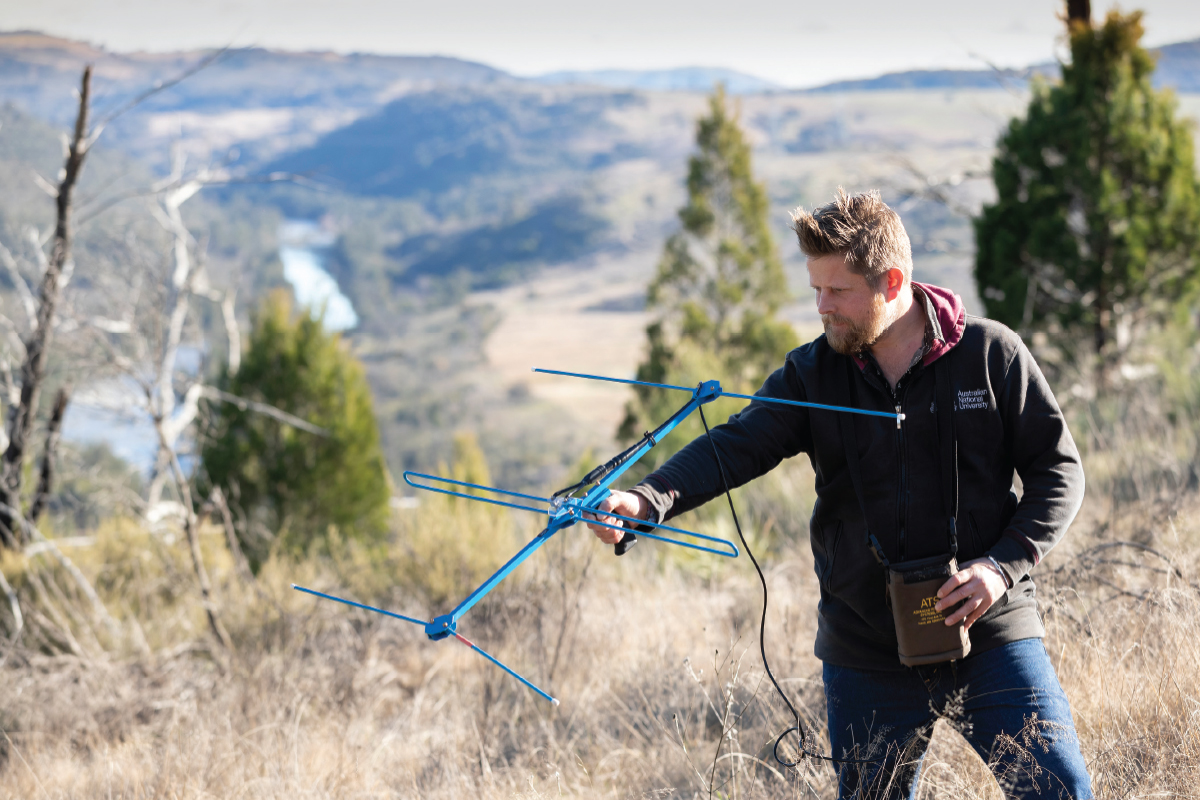Make your garden a wildlife haven
WORDS Kate Edwards
How to do your bit for our planet and enjoy watching native animals make their home in your garden.
Whilst conventional gardens with lawns, garden beds and European flora are the norm for so many households, they don’t offer much food or habitat for our native wildlife.
But by creating a natural habitat in your garden, you can attract native wildlife such as birds, bats, lizards, frogs, bees, butterflies and other insects. Not only is it a real pleasure to see the unique wildlife taking shelter and enjoying your garden, you are also doing your bit for the environment by encouraging native wildlife to return to our urban environments. Whether you’re starting a garden from scratch, or want to make changes to your existing garden, Matthew Frawley, Ginninderry’s Urban Design & Landscape Manager, has some basic principles to follow:
1. Plant local native plants

Native plants are the biggest drawcard for wildlife. They provide nectar for pollinators including birds, native bees, butterflies, moths, and bats. The native nuts, seeds, and fruits produced by these plants offer essential foods, and many native trees and shrubs provide protective shelter for mammals. They’re also drought tolerant and low maintenance, with many offering beautiful flowers and colourful fruits and seeds that will attract wildlife throughout the year. Make sure you plant a variety of different-sized plants and species that will offer a range of habitats and food sources throughout the year. For example, include native plants that flower throughout the year—especially over winter—to attract pollinators all year round.
2. Rocks, logs and mulch
Adding logs and rocks to your garden is a great way of mimicking the refuge that wildlife such as frogs, reptiles, echidnas and insects seek in bushland. Whilst surface mulch will ensure that there are plenty of worms and soil insects to provide food for native birds and animals. However, do not source logs, mulch and rocks from bushland areas—you’ll be taking away the existing habitats of wildlife. Instead, look for a reputable local supplier.

3. Birdbaths and ponds
Wildlife can struggle to find clean water sources during times of drought. But by building a birdbath or pond, you can provide local wildlife with water whilst also creating an attractive garden feature. Birds will return to a regular source of water, so it’s important to keep your birdbath topped up, clean from algae and located in a place that is safe from predators. No matter how big or small, a pond is a great addition to a garden. Make sure you populate it with local native aquatic and semi-aquatic plants to provide habitat for frogs and invertebrates. A solar pump is also a good idea to add movement and oxygen to your pond as this will help sustain a healthy ecosystem and discourage a stagnant habitat that will support insects like mosquitoes.
4. Nesting boxes
Australia’s wildlife has the highest rate of hollow dependency in the world, and because so many mature trees are cleared in suburban areas, they are left with significantly less places to shelter and breed. But you can recreate homes for hollow-nesting birds, bats and other mammals by having a nesting box in your garden. Just remember to locate it high above the ground (at least 4 metres) to keep wildlife safe from predators such as dogs, cats, rats and foxes. And ensure that the box entrance faces away from the hot north and north-westerly sun whilst also sheltered from the wind and wet.

5. Responsible pet management
With around 60% of Australian households having one or more pets, it’s important to ensure that our dogs or cats do not disturb or kill the native wildlife either in our gardens or our neighbourhoods. To prevent your pet from disturbing wildlife, try and designate an area for your pet that is separate to the habitats you’ve created for the local native wildlife in your garden, so that they are free to roam unharmed.



